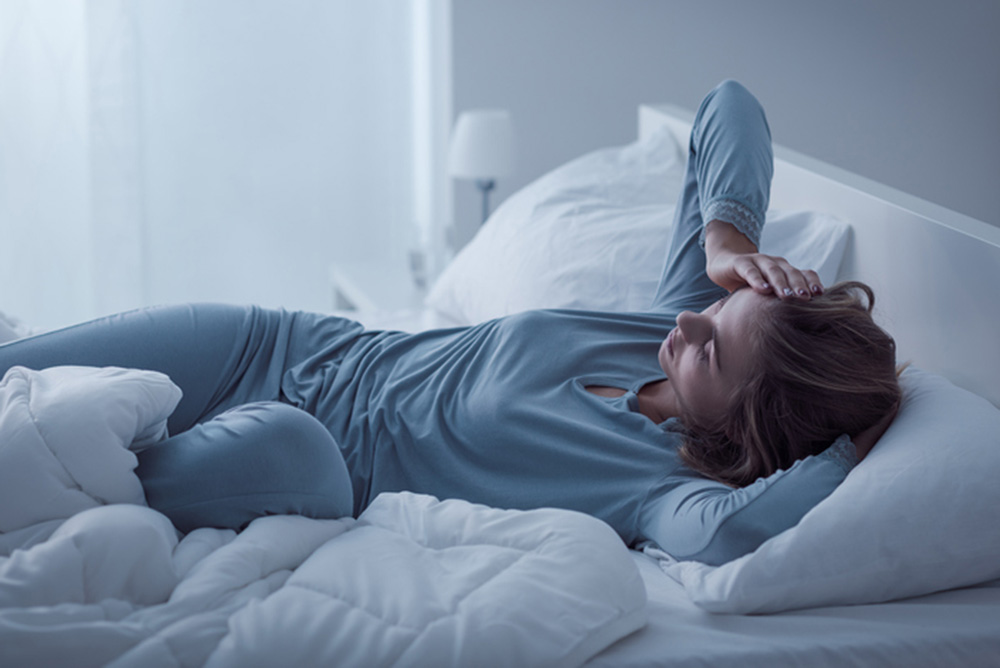
iStock
ACHING, THROBBING, pulling, itching, crawling, and creeping, with an irresistible urge to move the legs—ranging in severity from uncomfortable to irritating to painful —are among the experiences of people with Restless Legs Syndrome (RLS), “unlike normal sensations” of those without the disorder, according to the “Restless Legs Syndrome Fact Sheet” from the National Institute of Neurological Disorders and Stroke.
Recent research at Penn State University links RLS to cardiovascular disease in women—independent of obesity and high blood pressure, though both are also risks for those living with RLS.
With RLS, legs feel like they are jumping around or wracked by spasms that grow worse at rest in movie theaters and cars, trains and airplanes; and at night, often followed by a distinct symptom-free period in the early morning. Immediate relief can come from moving the legs or walking, but sensations often recur when movement stops.
RLS affects from 7 to 10% of the U.S. population and is one of the most prevalent neurological disorders in North America and Europe. It can occur at any age in both men and women, but women are affected up to twice as often as men, and the condition is more severe in those middle-aged or older, with symptoms becoming more frequent and long-lasting with age.
RLS—also called Willis-Ekbom Disease, referred to as RLS/WED—is classified as a neurologic disorder because it originates in the brain; a sleep disorder because it causes exhaustion and daytime sleepiness; and a movement disorder because moving the legs can provide temporary relief. Symptoms of “primary RLS” usually begin before age 40 and become worse over time. Nearly half of sufferers have a family member with the condition, which has been linked to genetic variants.
“Secondary RLS” usually has a specific cause, such as iron deficiency, neuropathy (nerve damage), diabetes and pregnancy (around 20% of women experience RLS during the last trimester). Anesthesia directed to the spinal cord, such as a spinal block, can also trigger symptoms. RLS can be relieved by alleviating or removing the cause.
More than 80% of RLS sufferers also experience the more common condition, called “periodic limb movement of sleep” (PLMS), with twitching or jerking movements that occur every 15 to 45 seconds sometimes throughout the night.
RLS has been linked to dysfunction in dopamine pathways involved in producing smooth, purposeful muscle activity and movement—in the same part of the brain affected by Parkinson’s disease— and can be triggered by medications like SSRI (selective serotonin reuptake inhibitor) antidepressants that affect the activity of dopamine.
Symptoms have also been traced to medications such as treatments for nausea and some antihistamines; to alcohol, nicotine and caffeine; and to sleep deprivation and other sleep problems such as apnea, which are in turn blamed for mood swings, irritability, depression and weakened immunity.
Linked to sleep problems as both a cause and an effect —it causes fatigue, and tiredness makes symptoms worse—RLS is blamed for up to a 20% decrease in work productivity. “Lifestyle” treatment recommendations include warm baths and relaxation techniques for their direct effects as well as for improving the quality of sleep.
Insomnia connected to RLS can also be alleviated by increasing magnesium from whole grains, nuts and green leafy vegetables, and from supplements; also by staying hydrated—drinking more water, especially in hot weather, and less caffeine and alcohol.
Anti-seizure drugs such as gabapentin can decrease symptoms as can dopamine-related medications and benzodiazepines, although all have side-effects, which range from fatigue to obsessive behaviors such as gambling or shopping.
Because many RLS sufferers have low levels of iron in the brain, iron supplements can help, especially for people with low blood ferritin levels, though some need intravenous iron.
Various devices have relieved RLS symptoms: the “restific” foot wrap, available by prescription, puts pressure on specific points on the bottom of the foot; the pneumatic compression device (PCD), available to rent, OTC or by prescription, used for an hour daily, improves circulation; and a vibrating pad called Relaxis, available by prescription, used at night to help with sleep, provides “counter-stimulation” that may relieve RLS.
Yoga and stretching exercises, specifically, have been shown to improve RLS symptoms. Increasing exercise and physical activity can also help, though exercising too strenuously particularly later in the evening can makes symptoms worse.
—Mary Carpenter
Every Tuesday Mary Carpenter lets us in on the latest news about our well-being.

Excellent piece, from my RLS sufferer point of view. Thanks!